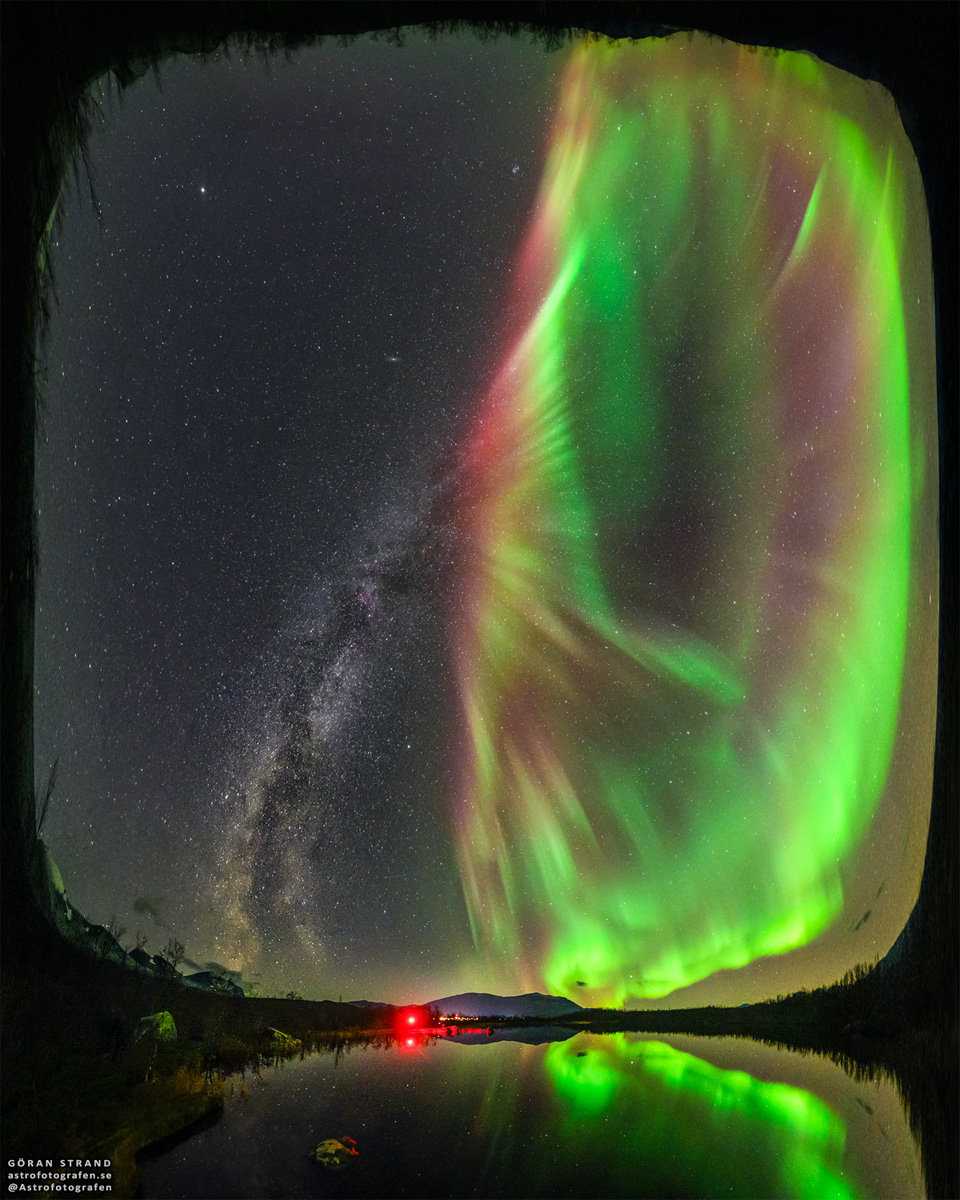2022年10月18日
Milky Way Auroral Flower
Image Credit & Copyright: Göran Strand
Explanation: Could the stem of our Milky Way bloom into an auroral flower? No, not really, even though it may appear that way in today’s featured all-sky image. On the left, the central plane of our home galaxy extends from the horizon past the middle of the sky. On the right, an auroral oval also extends from the sky’s center — but is dominated by bright green-glowing oxygen. The two are not physically connected, because the aurora is relatively nearby, with the higher red parts occurring in Earth’s atmosphere only about 1000 kilometers high. In contrast, an average distance to the stars and nebulas we see in the Milky Way more like 1000 light-years away – 10 trillion times further. The featured image composite was taken in early October across a small lake in Abisko, northern Sweden. As our Sun’s magnetic field evolves into the active part of its 11-year cycle, auroras near both of Earth’s poles are sure to become more frequent.
Tomorrow’s picture: galaxy grab
银河与极光花
影像提供与版权: Göran Strand
说明: 银河花茎会开出极光花吗?显然不会,纵然今天的全天主题影像看似在做此暗示。在影像的左侧,可见到我们本星系的中央盘面从地平线伸展超过天顶。在影像的右侧,主要受到氧明亮泛绿辉光渲染的椭圆状极光,则从天顶向周围伸展。不过这二者毫无关联,因为极光离我们很近,极光较高的泛红带,近在地球大气之内,高度约只有1,000公里。相较之下,我们所见的银河之恒星和星云,平均距离在1,000光年上下,是极光高度的10兆倍之多。这幅组合主题影像,是在10月初摄于瑞典北部阿比斯库国家公园内的一座小湖之旁。随着太阳的磁场演化到它11年周期的活跃区段,地球的两极铁定会更常出现极光。
明日的图片: galaxy grab







